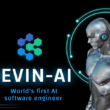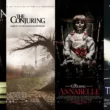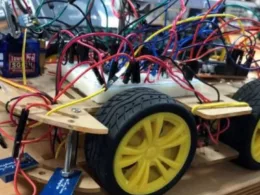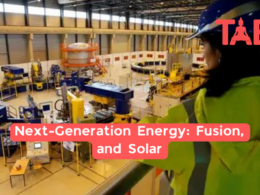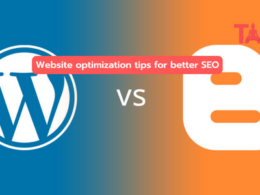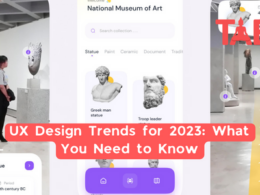Product Design And Process
What is Product Design?
Product Design is a 5 stage process of spotting the market moment, clarifying the problems, growing the solution for that problem, and certifying the solution with the end-users.
What is Product Design Process?
5 Stages of Product Design
- Empathize
This is the 1st stage of product design which is entirely run around the end-users and market moments. It defines the user’s needs and tells you that your product is fit or not for the market. So, it should be a complete or crucial need before starting the design of the product.
- Define
It is the 2nd stage of product design, and it allows you to have a better understanding of upcoming problems and a clear vision to work on.
- Ideate
It is a 3rd stage known as a brainstorming session, and it ends up with multiple creative ideas and solutions.
- Prototype
The prototype is not the final stage, but it is generating leads to the final stage. You can run some of the working solutions or tests and deliver the best one.
- Test
It’s a final stage where you run all the possible tests on the end-user and gather their feedback.
Empathize
Empathize is entirely run around the end-users and market moments. It defines the user’s needs and tells you that your product is fit or not for the market. So, it should be a complete or crucial need before starting the design of the product.
How to Empathize End-User or User-Centric Design
User Research
Users are the primary key
- User Interviews: We also use this method; it is the most widely used way to discover the understanding of users’ needs and pain points. And the benefits Through the user interviews, you can feel and see the actual problems you will face after the product’s release.
User Interviews can be held personally or remotely.
Learn How to Conduct Users Interviews
- Contextual Inquiry: It is one type of research where you spot people in their day-to-day activities in the natural environment. You can observe them, ask questions and gather feedback for your product. And the goal of this inquiry is to understand people’s feelings and perspectives.
- Market Research: In this method, you can identify and better understand how your competitors tackle their problems and their approach to solving them. Also, you will get an idea about your competitor’s design patterns and errors.
- Online Surveys: In an online survey, you can reach as many users in a short amount of time. It will save your time and help you to record all the data in a single digital form. And the main benefit is you can reach and target any number of people.
Define
After completing the Empathize phase, you have complete information about the user’s behavior and thoughts for the product. And you can better understand the problems now.
You can understand the goal of the product and upcoming questions as well. It will help you to view a clear vision of the objectives of your product and guide you to the way that you have to go on to achieve your goal.
Always create a statement of your problems with “How Might We?”
Follow the above example:
Ideate
Ideate is the phase where you and your teammates collaborate and brainstorm to generate ideas to solve the problem creatively.
It is the most valuable and prescribed phase. With it, you can generate trust in your stakeholders and open a door for the future vision.
Always create a User Journey Map because it helps to understand better your flow of data and the user’s journey while using the product. And try to make your user’s journey more accessible and less complex.
Sketching and Low fidelity wireframing is the standard technique for creating a visual look of the product. You can create it on a sheet of paper or use digital tools for that. UI/UX Design Tools will help you to create better low-fidelity wireframing.
Prototype
Prototyping is the middle stage between a low fidelity prototype and a final product/high fidelity prototype. It is not the final product, but it will give an idea about its vision and the working experience.
You can use one of these UI/UX Design Tools, for the working prototype to the final stage of your product development.
And Adobe XD is my personal favorite. I’ve been using XD more than a year, and I learned a lot about its usability and features. There are a lot of XD Plugins that will help you to create a better product.
Test
Now you are at the final stage of product designing. It’s time to run some final tests on your product to see the functionality and usability and find errors as well.
As I mentioned before, the User is the primary key. So, give freedom to your user to use the product and share the feedback and pain points. Identify the usability of the product and crucial points as well.
We have some methods tools for usability testing:
Dog-Fooding: Eating your own dog food Is a very famous method. It allows you and your team to spot an issue and create empathy for your product in-house before finalizing the product.
Guerrilla Testing: It is a very effective method to know the usability of your product. In this method, random users are involved who have no connection with your product and cluster a vast amount of data.
Moderate Usability Testing: It is just the reverse of dog-food testing. In this method, real users are involved in testing the product. It can be real users or remotely.
The Takeaways
It is a non-linear process:
The benefit of this product design process is that it is a non-linear process, which means you don’t have to follow the sequence of methods. You can reverse the process at any stage when you find an issue or better solution idea for the product.
It is an infinite process:
As we know, that design is a dynamic field, and nothing is permanent in the design. After releasing the final product, you should gather feedback and improve the core of your product.
So keep refining and improve it as per the user’s needs and demands.
Final Words
Always keep one thing in mind when you are designing a product “Design is for the user who uses, not for the designer who made”


